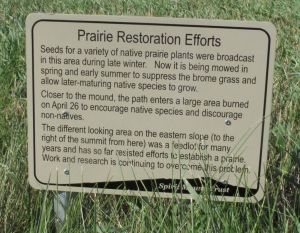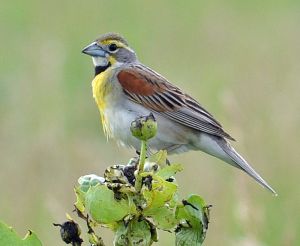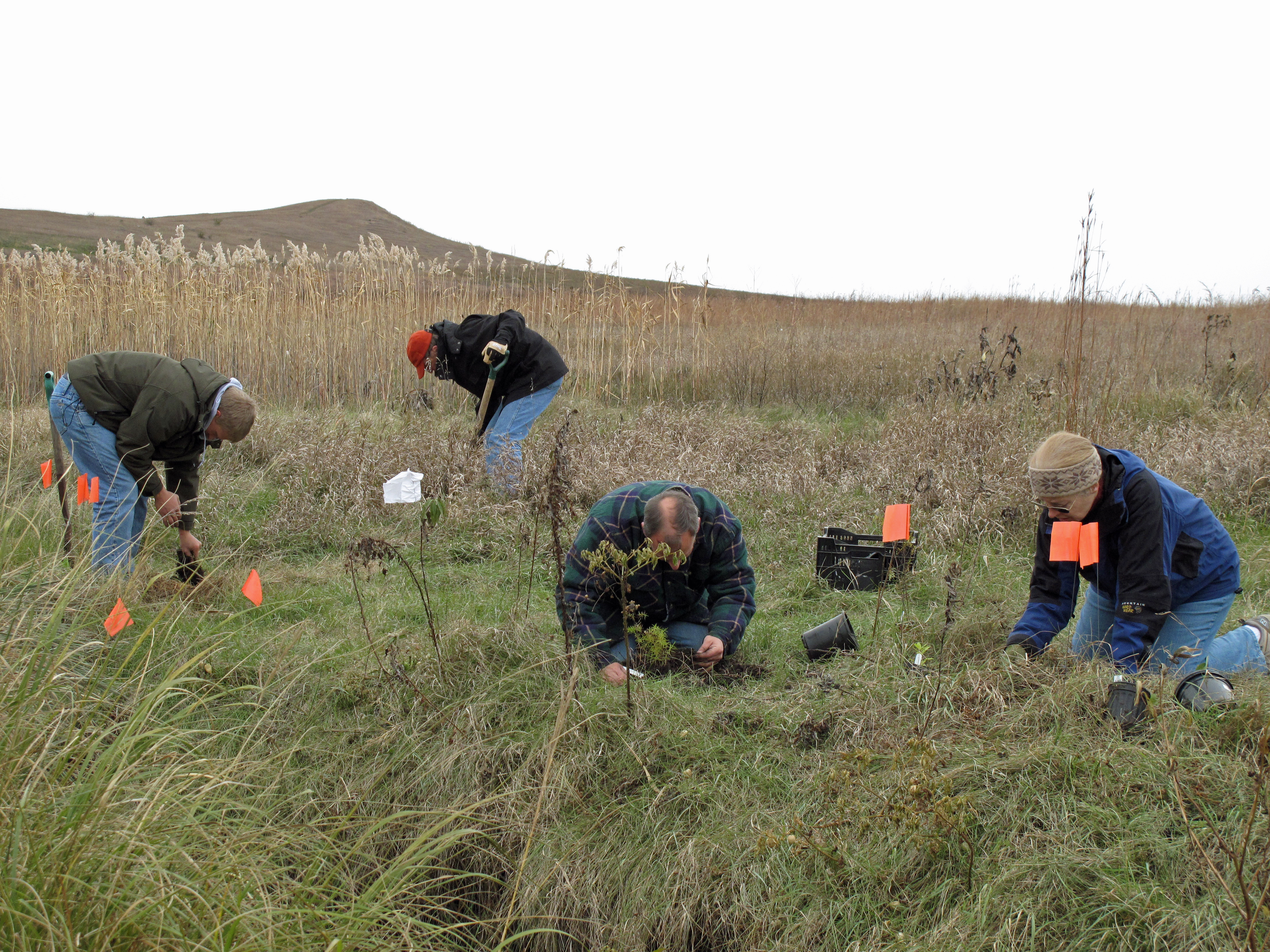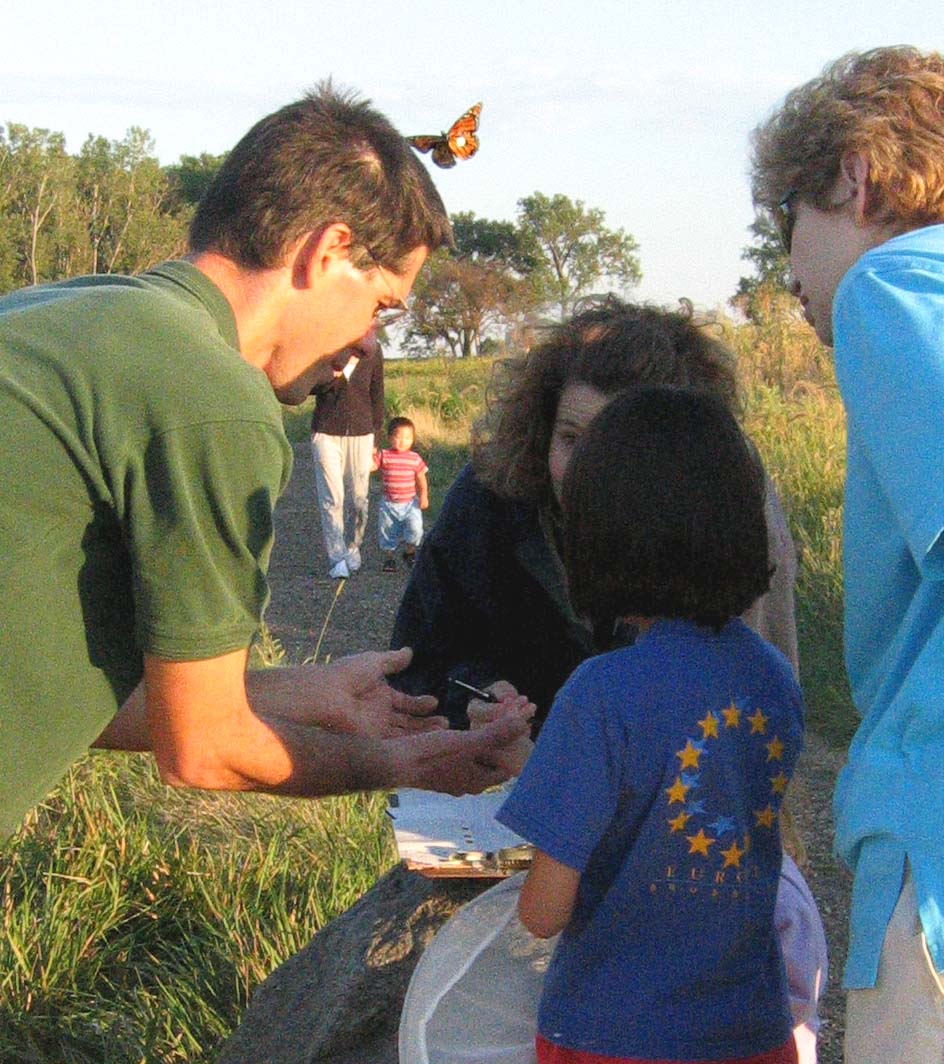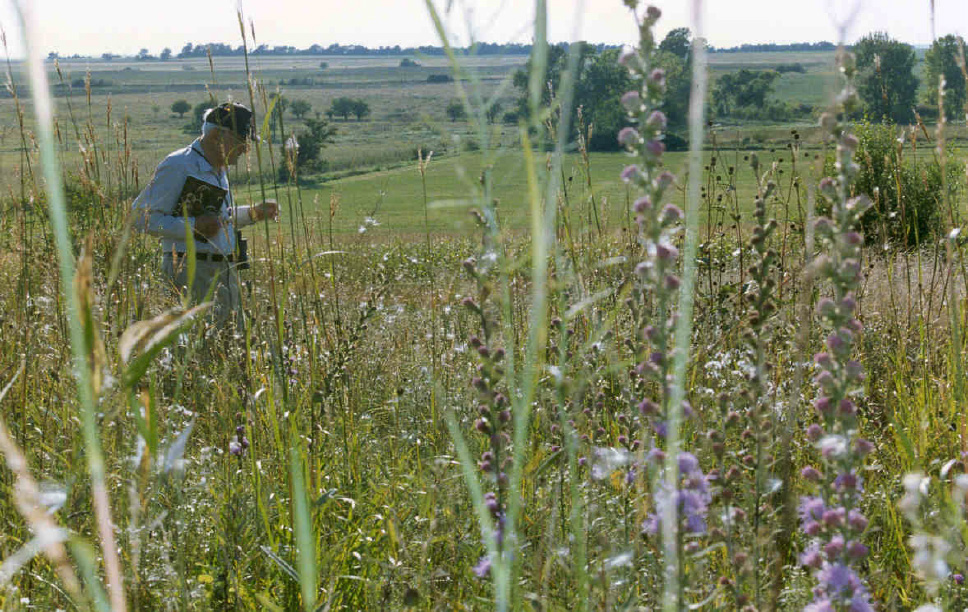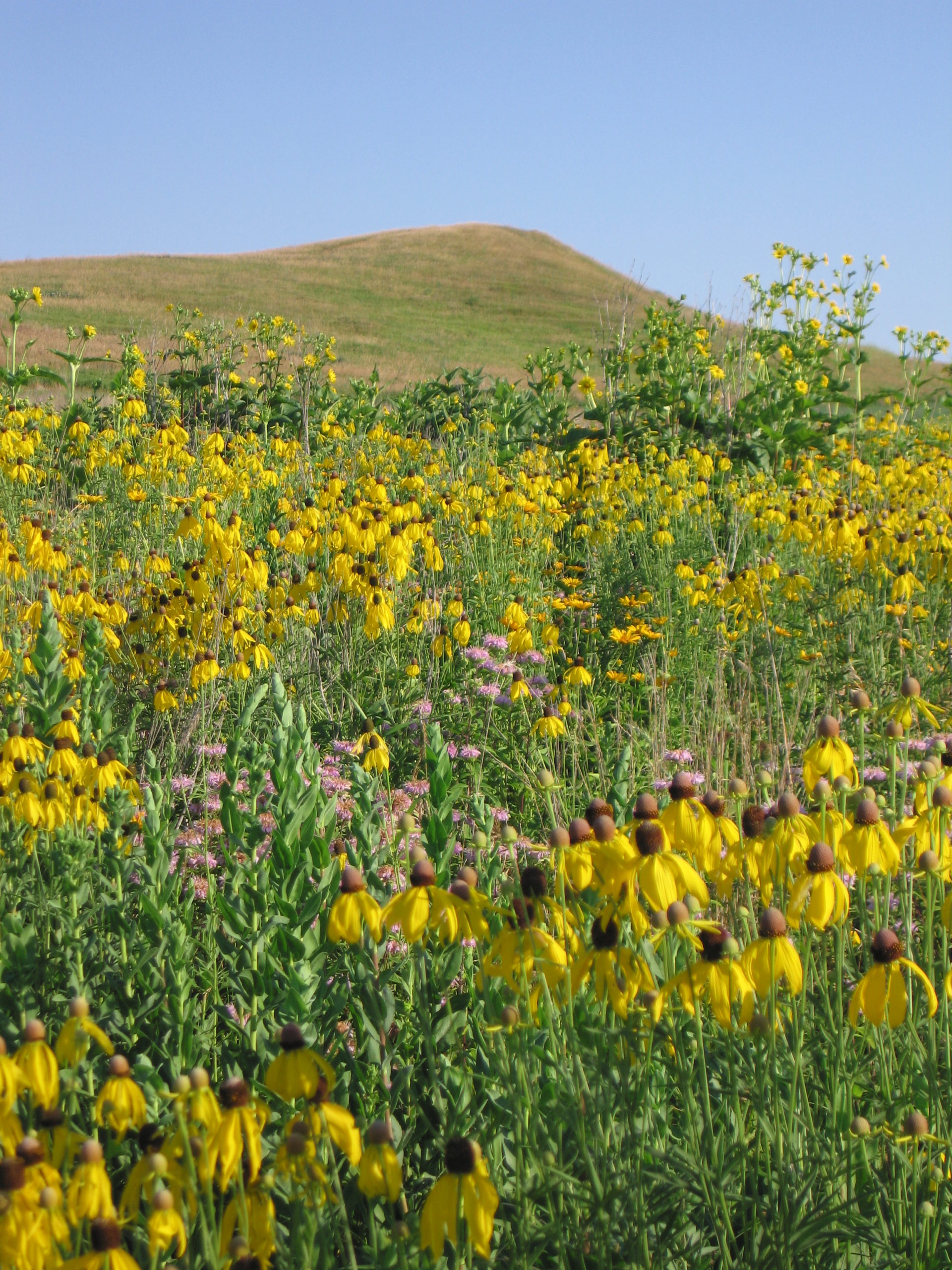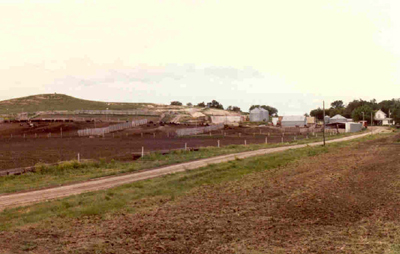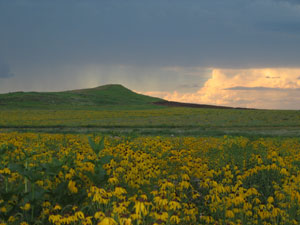Prairie Restoration
Prairie Restoration
The Prairie today
One of the Trust's primary responsibilities is to work with the South Dakota Parks & Recreation Division to develop a highly diversified prairie. This ideal prairie will resemble that seen by Lewis and Clark in 1804. The original seeding on the site included 10 grass species and 53 forbs, the ideal prairie will be much more diversified.
There are many challenges. We must encourage the remnants of the original prairie to proliferate, halt the growth of invasive species and introduce additional native species at appropriate sites. As the Trust's sign panel on the kiosk reads:
A "prairie primeval may be impossible, but that goal will always be the projects partnership's goal."
Prairie Restoration
History of the prairie
In 2001, Spirit Mound was home to a cattle feedlot, farmhouse, concrete trench silo, numerous small buildings, and a tree shelterbelt. Much of the land was used for farming and pasture, and the heavy use began to cause erosion and other damage to the mound, in addition to making one of the state's most important pieces of history aesthetically unpleasing.
Through the efforts of the Spirit Mound Trust, the land that housed Spirit Mound was purchased from multiple landowners on July 29, 2001 and efforts began to return Spirit Mound to one of the most diverse tallgrass prairies in the area.
In 2002, buildings, trees, fences, and roads were cleared and buried and the land was prepared for planting of native seeds. Nearly $200,000 was spent on seeds of native species. Since the first planting, there has been a continous cycle of spraying and burning in order to keep invasive species under control. The diverse tall-grass prairie has also contributed to an increase in the number of bird, insect and mammal species on the Spirit Mound site.
Following the first seeding many native grasses thrived. However, in some areas the annual weeds and non-native grasses dominated. The differential success was due to contrasting land use histories. With good management practices we hope the entire 320 acres will become a highly diversified prairie in a few years.
Get involved!
Please reach out to us if you have a good idea about prairie management, would like to make a donation to help with restoration efforts, or if you’d like to get your hands dirty with planting!
Most of our financial assistance comes from grants and membership dues. You can become a member by filling out this form and mailing it to us with $10 or more. Members will receive our annual newsletter.
All gifts/donations are tax deductible. We are a tax exempt 501(c)(3) organization (#93-0921345).
